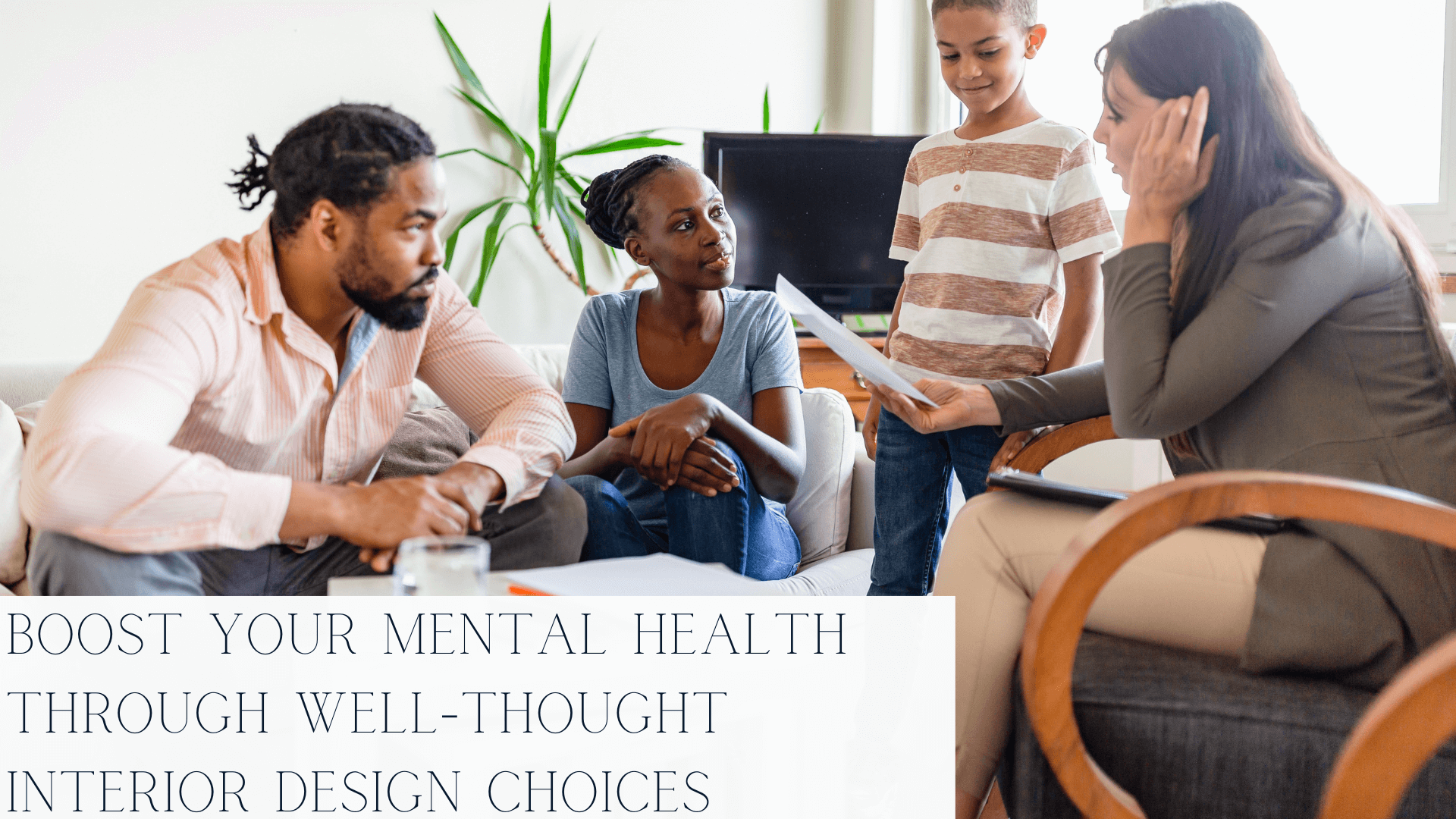Your cart is currently empty!
Home comfort is an extension of a person’s identity. Your identity as an individual can be seen through your interior decór, lawn maintenance, and other home living choices you make. Interior design choices significantly relate to mental health. Colours, textures, patterns, and space availability can impact self-perception and our view of the world.
Every individual has specific preferences. Some people feel more relaxed and focused in a bright and colourful room or in a well-organised and well-ventilated space. Others prefer subdued tones and natural materials. As such, interior designers pay careful attention to the psychology of interior design.
Interior designers use colour, lighting, layouts, textures, and artworks to create motivating and uplifting spaces. They spend time creating ideal living spaces that boost mental health.
What You Can Expect In An Ideal Living Space
The following design elements can create an environment conducive to reducing mental health issues, such as stress, anxiety, and depression, and improve living conditions.
Room Designs Welcoming Sunlight
Days with plenty of sunshine were associated with better mental health. Getting some sun increases your serotonin, a body hormone associated with elevating mood and helping a person feel calm and focused. Designing your room in a way that enough sunlight drenches the home interiors can energise and motivate you greatly.
Spaciousness Expansion
Many people prefer small and compact spaces, but a sense of spaciousness can also improve mood. With the right design, furniture placement, storage organisation, lighting, and colour schemes, spaces can be easy to navigate, fostering social interaction. In all room sizes, room organisation is a major component of a peaceful and soothing home.
Colour Choice
Colour is one of the most well-documented mood-enhancing design elements. Both researchers and interior designers continue to review and revise their stances regarding the impact of colour. Aside from psychological traits and benefits attributed to colours, saturation and brightness are also significant components in their affective powers.
Saturation refers to the pureness of colour. More saturated colours appear to be purer. On the other hand, brightness is based on the amount of white in the colour or how light a colour seems. Bright colours are less saturated. Hence, light and pale tones can have a relaxing effect. Soothing colours, like pale blush pink, are usually less saturated and brighter. In contrast, colours that are deeply saturated and less bright, like emerald green, can feel intense or energising.
Colours are also classified into warm and cool colours. We feel physically warmer when we are in a room painted with warm colours. Cool colours make us feel calmer. Red is popular during the cold season and turquoise and teal are popular during warm weather.
Every colour also has associated psychological effects, evoking specific emotional responses.
- Red – power, aggression, and passion
- Orange – energy, sports, competition, and innovation
- Yellow – relaxation, happiness, creativity, and innocence
- Green – balance, harmony, nature, growth, and renewal
- Blue – freshness, calmness, serenity
- Purple – luxury, privilege, individuality, and creativity
- Grey – neutrality, balance
- Brown – strength, reliability, security, and safety
- Black – death, unhappiness, mystery, sophistication, intellectualism, and sexuality
- White – cleanliness, purity, and innocence
Whether you find associations with colour align with research findings or you have created an unusual personal connection, ensure that the colours you choose make your home feel like a sanctuary.
The Home Flora
Bringing nature inside the home can also improve your mood. The presence of plants can enhance concentration and memory retention and reduce stress. Besides boosting mental health, house plants act as natural air filters, reduce allergens, and stabilise humidity. Flowers, as a beautiful addition to any interior space, have a calming and relaxing effect on people.
Subtle Art Designs
Art viewing can have a positive impact on mood and mental health. Some artworks create sad and negative emotions. Social norms are the basis of the psychology of art. Personal preferences and experiences greatly influence how people react to works of art. Expressing yourself through art designs in your home tells other people about your nature and personality. Even inexpensive prints can feel welcoming and stimulating.
Conclusion
Experienced interior designers know the impact of home design on mental health. Constantly, they would ask how a room design or even a single item in the room makes a client feel or what rooms in the house reduce or induce stress.
Together with an interior design company in Singapore, transform your spaces and elevate them to become liveable and new. Whether you live in a 2-room or 5-room BTO, Style+Space have the right package to refresh your home.

